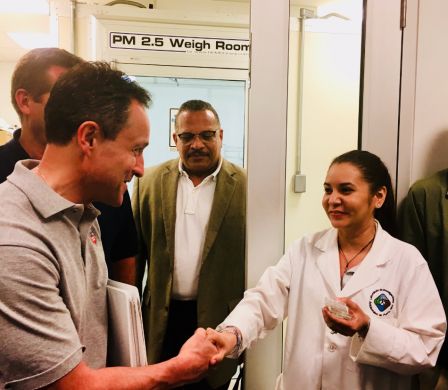
Pollution from cars, commercial trucks, aircraft, marine vessels, and heavy equipment in Puerto Rico were constantly being monitored by the Puerto Rico Environmental Quality Board before Hurricane Maria, which killed more than a 1,000 people and left great devastation in its trail.
Puerto Rico’s Environmental Quality Board Analytical Laboratory in San Juan was severely impacted by Hurricane Maria and required major work to make it fully operational.
In addition to lab repairs, the U.S. Environmental Protection Agency is assisting in rebooting Puerto Rico’s air monitoring network.
The Agency has also just awarded the Puerto Rico Environmental Quality Board more than $22,000 in additional funding to support its air pollution control and air monitoring programs. The new funding brings the total amount awarded by EPA to PREQB to more than $880,000.
“As Puerto Rico recovers from the hurricanes, it is critically important that we continue to support the Commonwealth’s efforts to protect air quality for its 3.3 million residents,” said EPA Regional Administrator Pete Lopez. “EPA’s strong partnership with the people of Puerto Rico is important to maintaining a healthy environment. We know we can achieve our best environmental results by working together.”
EPA coordinated with the manufacturers to ensure new equipment meets requirements and anticipates having all monitoring stations up and running by October.
This grant will assist PREQB in its efforts to implement air pollution control programs for nitrogen dioxide, sulfur dioxide, lead, fine air particles, ozone, and carbon monoxide throughout Puerto Rico. The programs include:
• developing and implementing regulations for stationary sources of air pollution;
• updating regulations for mobile sources of air pollution, such as cars, commercial trucks, aircrafts, marine vessels, and heavy equipment;
• improving emissions data and modeling; and
• operating a monitoring network.
The U.S. Army Corps of Engineers has been tasked with…
Brown and Caldwell, a leading environmental engineering and construction firm,…
Humboldt State University, one of four campuses within the California…